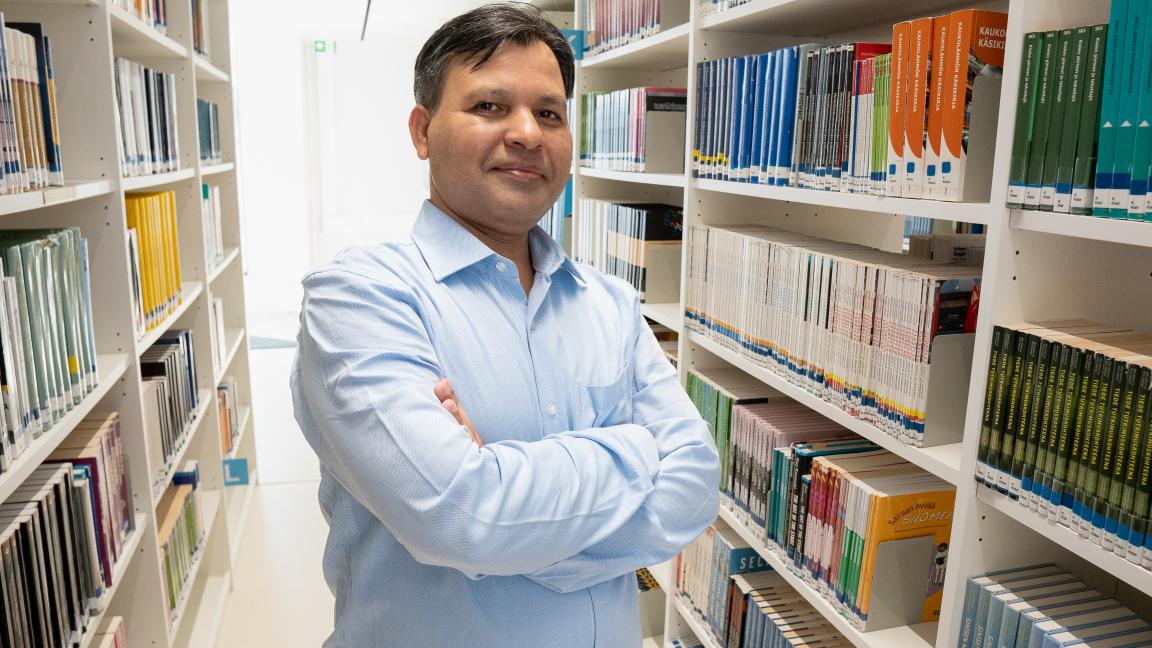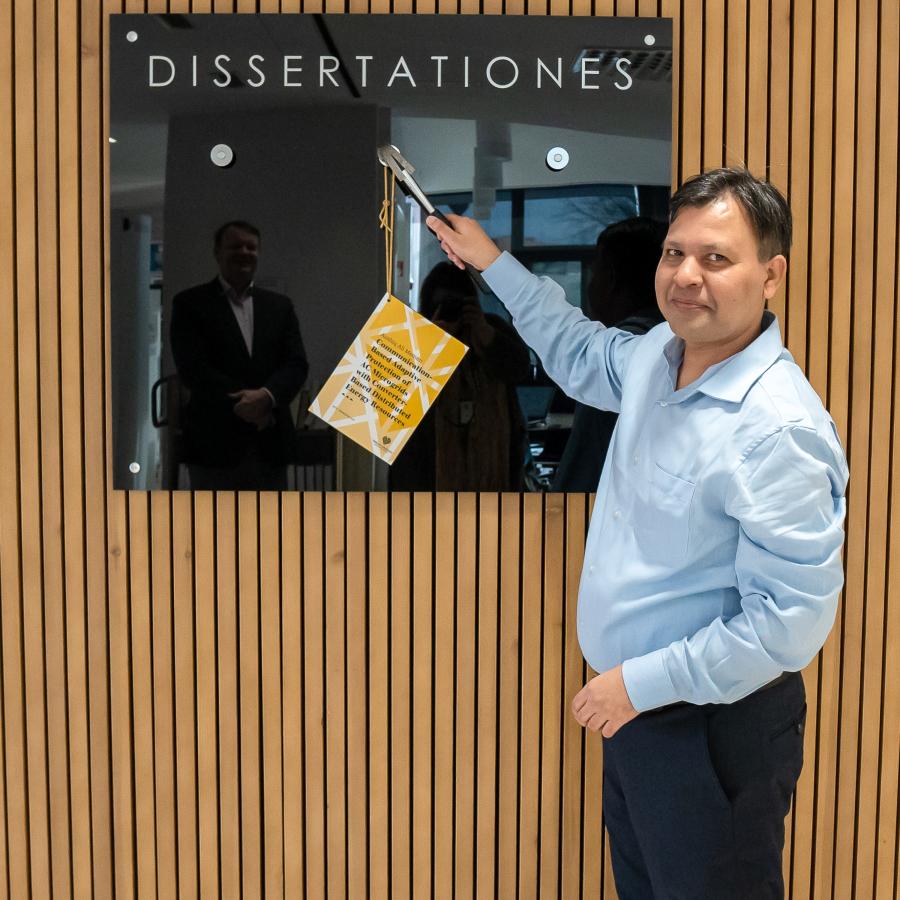AC microgrids can provide clean and reliable electricity even when disconnected or islanded from the main electricity distribution grid, but there are some technical challenges.
– Although the conventional single-setting overcurrent protection devices work well during the grid-connected mode, these either fail or take an enormous time to detect short-circuit faults during the islanded mode due to the reduced available fault current, says Aushiq Ali Memon, who will be defending his dissertation on 23 February 2024.
– Communication-based adaptive protection schemes will enable the successful and quick detection and isolation of short-circuit faults in AC microgrids with converter-based distributed energy sources (DER) during both grid-connected and islanded modes.
Grid-connected and islanded AC microgrids face different kind of protection challenges
The connection of considerable number of converter-based DERs create protection challenges for the grid-connected AC microgrids. Depending on the size of power electronic converters as well as location of DERs and faults, some protection devices may experience lower while others may experience higher-than-expected fault current. Moreover, the connection and disconnection of DERs due to operational and economic reasons will fluctuate fault current levels in the grid-connected mode. These phenomena disturb the required protection coordination among protection devices.
The islanded AC microgrids may also experience similar protection challenges. The distinction between the two modes of operations is the absence of the main grid connection in the islanded mode. This means that only local converter-based DERs are available to provide a limited fault current contribution during faults in the islanded mode. Consequently, protection devices will experience a very reduced fault current levels in the islanded mode compared with the grid-connected mode which may not be enough for the quick detection of short-circuit faults. Even the blinding of protection devices is also possible.
The communication-based adaptability of protection settings – to lower and higher tripping thresholds during lower – and higher-than-expected fault current levels respectively will solve protection coordination problem and prevent blinding of protection devices. The protection relays with at least two setting groups and communication links between relays are two important requirements for communication-based adaptive protection schemes.
Challenges in communication
In his dissertation Memon has estimated the round-trip communication transfer delay of IEC 61850 GOOSE message exchange between protection relays using real-time hardware-in-the-loop simulation-based testing. New directional protection elements for shunt faults and methods to detect single-phase open or series faults (broken line) have been proposed and evaluated using PSCAD and MATLAB simulations. New grid codes for the DERs including low voltage ride-through and high voltage ride-through features have been proposed for the islanded mode.
Ethernet-based communication protocol, for example, IEC 61850 GOOSE message tested in this work, is reliable but it transfers data with a nondeterministic delay and a brief intermittent data loss due to high data traffic and other unforeseen factors. Therefore, Memon suggests a signal continuity check inside the protection relay for the enhancement of data security and prevention of false tripping.
A moderate increase of converter size of DERs will avoid communication related flaws
A separate case study also finds that a moderate increase of converter size of DERs and battery energy storage up to three times the rated current could avoid communication-based adaptive protection in the islanded mode. This means that conventional protection devices like fuses could also work during short-circuit faults in the islanded mode even if there is a communication failure or any cyber-attack event.
– I encourage companies and utilities working on microgrid development and implementation to benefit from the results of these findings. Further cost-benefit analysis of using either adaptive protection or increased size of DER converters or hybrid combination of both will help to implement more microgrids with 100 percent renewable energy sources for the large interest of the society, says Memon.
Memon also thinks that the islanded AC microgrids would not only increase the reliability and resiliency of existing electricity distribution networks but also implement a sustainable and emission-free rural electrification.
The results of Memon's doctoral dissertation are based on eight sub studies that examined the conventional protection, adaptive protection, validation testing of adaptive protection, impact of battery storage on adaptive protection, evaluation of grid codes of DERs, new methods of directional protection, detection of open phase faults, and proposals for new grid codes of AC microgrids.
Doctoral dissertation
Memon, Aushiq Ali (2024) Communication-based adaptive protection of AC microgrids with converter-based distributed energy resources. Acta Wasaensia 529. Väitöskirja. Doctoral dissertation. Vaasan yliopisto. University of Vaasa.
Public defence
The public examination of M.Sc. Aushiq Memon’s doctoral dissertation “Communication-Based Adaptive Protection of AC Microgrids with Converter-Based Distributed Energy Resources” will be held on Friday 23 February 2024 at noon at the University of Vaasa, Auditorium Nissi.
It is also possible to follow the defence online: Zoom, password 684519).
Professor Francisco Gonzalez-Longatt (University of South-Eastern Norway, Loughborough University) will act as an opponent and Professor Kimmo Kauhaniemi as a custos.
Further information
Aushiq Ali Memon, email: aushiq.memon@uwasa.fi
Aushiq Ali Memon was born in Khairpur Mir’s, Sindh, Pakistan and graduated from the Government Higher Secondary School, Sobhodero, Khairpur Mir’s. He has graduated as Bachelor of Engineering in Electrical Engineering from the Quaid-e-Awam University of Engineering, Science and Technology, Nawabshah, Pakistan and Master of Science (Power Engineering) in Electrical Power Engineering from the Brandenburg University of Technology, Cottbus, Germany. At the moment, Memon is a project researcher at the University of Vaasa, Finland.

